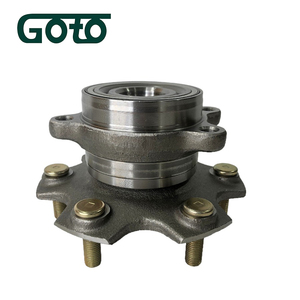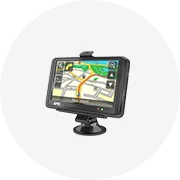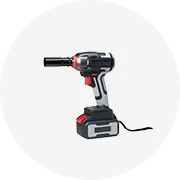Types of Wagon R Suzuki
The Suzuki Wagon R is a versatile compact car known for its practical design and reliability. Understanding its key components helps owners maintain and upgrade their vehicles effectively.
External Components
External parts of the Suzuki Wagon R are situated on the outside of the car and visible from the exterior. These include:
- Body panels and frame
- Doors and windows
- Roof structure
- Hood and trunk
- Fenders and bumpers
- Lighting systems
Primary functions: Improving aerodynamics, providing protection from elements, and enhancing the vehicle's overall aesthetics.
Internal Components
Internal components are located inside the vehicle and not visible from the outside. The Wagon R's interior includes:
- Dashboard and instrument cluster
- Center console and controls
- Seats and upholstery
- Door panels and trim
- Headliner and roof lining
- Floor carpeting and mats
Primary functions: Providing comfort, convenience, safety, and entertainment for vehicle occupants.
Chassis System
The chassis is the Wagon R's internal structure that connects all components and provides the foundation for the vehicle. It includes:
- Main body frame
- Floor pan structure
- Suspension mounting points
- Engine cradle
- Structural reinforcements
Primary functions: Providing structural support, ensuring vehicle integrity, and maintaining safety standards during operation.
Expert Tip: When purchasing a used Wagon R, inspect the chassis for signs of rust or damage, as these issues can compromise the vehicle's structural integrity and safety.
Wagon R Component Importance Rating
Specifications and Maintenance of Wagon R Suzuki
Proper maintenance is crucial for ensuring your Suzuki Wagon R performs reliably and maintains its value over time. Here's a comprehensive guide to the specifications and maintenance requirements for key systems.
| Component | Specifications | Maintenance Interval | Maintenance Tasks |
|---|---|---|---|
| Engine | 1.0L-1.2L capacity, turbocharged options, dual-fuel capability (petrol/LPG) | Every 5,000-10,000 km | Oil change, filter replacement, coolant check, belt inspection |
| Tires | All-season design, optimal grip in various conditions | Monthly | Pressure check, tread depth measurement, rotation every 10,000 km |
| Battery | Maintenance-free design with enhanced calcium technology | Every 3 months | Terminal cleaning, charge level testing, mounting inspection |
| Suspension | MacPherson front, torsion beam rear axle | Every 20,000 km | Shock absorber inspection, bushing check, alignment verification |
Engine Maintenance Essentials
The Suzuki Wagon R's engine is designed for fuel efficiency and reliability. With proper maintenance, it can provide years of trouble-free operation:
- Oil Changes: Use the manufacturer-recommended grade and change every 5,000-10,000 km depending on driving conditions.
- Cooling System: Regularly check for leaks and maintain proper coolant levels to prevent overheating.
- Air Filter: Inspect every 10,000 km and replace as needed to ensure proper airflow and prevent contaminants.
- Fuel System: For dual-fuel models, have the LPG system professionally inspected annually.
Important: Neglecting regular oil changes in your Wagon R can lead to accelerated engine wear and potential failure. Always follow the manufacturer's maintenance schedule, especially for turbocharged models which may require more frequent service.
Tire Care and Maintenance
Proper tire maintenance is critical for safety, fuel efficiency, and ride comfort in your Wagon R:
- Pressure Monitoring: Check monthly using a reliable gauge and adjust to specifications listed on the driver's door jamb.
- Rotation Schedule: Rotate tires every 10,000 km to ensure even wear patterns.
- Tread Inspection: Regularly check for uneven wear, punctures, or damage that could compromise safety.
- Seasonal Considerations: Consider switching to winter tires in cold climates for optimal traction and safety.
Battery Maintenance
The Wagon R's battery system provides reliable starting power and electrical supply:
- Terminal Care: Keep terminals clean and tight to prevent starting issues.
- Charging State: Have battery charge tested seasonally, especially before winter.
- Mounting Security: Ensure the battery is securely fastened to prevent vibration damage.
- Replacement Guidelines: Most batteries last 3-5 years; consider preventative replacement at the 4-year mark.
Suspension System Maintenance
The Wagon R suspension system ensures comfortable rides and stable handling:
- Component Inspection: Regularly check shock absorbers, struts, springs, and bushings for wear or damage.
- Alignment Service: Maintain proper wheel alignment to prevent uneven tire wear and ensure optimal handling.
- Driving Habits: Avoid potholes, road debris, and overloading to protect suspension components.
- Warning Signs: Address unusual noises, excessive bouncing, or pulling to one side promptly.
Maintenance Schedule Tip: Create a digital maintenance log for your Wagon R that sends reminders for upcoming service intervals. Many smartphone apps can help track maintenance history and notify you when services are due.
How to Choose Parts and Accessories for Wagon R Suzuki
Selecting the right parts and accessories for your Suzuki Wagon R ensures optimal performance, reliability, and value. Consider these key factors when making your purchasing decisions:
Compatibility
Always verify that parts match your specific Wagon R model, year, and trim level:
- Check vehicle identification number (VIN) when ordering
- Consult the owner's manual for specifications
- Use parts catalogs that offer model-specific filtering
- Verify fitment with the seller before purchasing
Why it matters: Incompatible parts can cause performance issues, damage other components, and potentially void your warranty.
Quality Assessment
The quality of parts directly impacts reliability and longevity:
- OEM (Original Equipment Manufacturer) parts match factory specifications
- Quality aftermarket brands often offer comparable performance at lower costs
- Look for industry certifications and standards compliance
- Check reviews from other Wagon R owners
Quality indicators: Proper packaging, clear manufacturer information, and quality control markings.
Budget Considerations
Balance cost with quality when selecting parts:
- Prioritize spending on safety-critical components
- Compare prices across multiple retailers
- Consider long-term value rather than just upfront cost
- Watch for seasonal discounts and promotions
Cost-saving tip: Quality aftermarket parts from reputable manufacturers often provide the best balance of performance and value.
Warranty Coverage
A good warranty indicates manufacturer confidence:
- OEM parts typically offer warranties that align with vehicle coverage
- Compare warranty terms across brands (duration, coverage limits)
- Keep receipts and warranty documentation
- Understand what actions might void warranty protection
Pro tip: Some premium aftermarket parts offer longer warranties than OEM equivalents.
Installation Complexity
Consider your technical skills and available tools:
- Check if installation requires specialized tools
- Review installation guides before purchasing
- Budget for professional installation if needed
- Look for parts that include detailed instructions
DIY difficulty scale: Simple (air filters, wiper blades) to Complex (suspension components, engine parts).
| Part Type | OEM Recommendation | Aftermarket Viability | DIY Installation Difficulty |
|---|---|---|---|
| Filters (Air, Oil, Fuel) | Recommended but not essential | High - Many quality options | Easy (1/5) |
| Brake Components | Highly recommended for critical parts | Medium - Select reputable brands | Moderate (3/5) |
| Suspension Parts | Recommended for optimal handling | Medium - Research carefully | Difficult (4/5) |
| Electrical Components | Highly recommended | Low - OEM usually best | Varies (2-5/5) |
| Interior Accessories | Optional | High - Many quality options | Easy to Moderate (1-3/5) |
Shopping Tip: Create a parts replacement schedule based on your Wagon R's mileage and age. This allows you to budget effectively and watch for sales on items you'll need in the near future.
How to DIY and Replace Wagon R Suzuki Parts
Performing your own maintenance and parts replacement can save money and provide a sense of accomplishment. Here's a comprehensive guide to DIY maintenance for your Suzuki Wagon R, focusing on tire replacement as an example:
Safety First: Always prioritize safety when performing DIY maintenance. If you're unsure about any procedure, consult a professional mechanic. Some complex repairs are best left to trained technicians.
Essential Tools for Wagon R DIY Maintenance
- Basic Tool Kit: Wrenches, screwdrivers, pliers, socket set with various sizes
- Specialized Tools: Car jack, jack stands, lug wrench, tire pressure gauge
- Safety Equipment: Gloves, safety glasses, wheel chocks
- Maintenance Supplies: Shop towels, brake cleaner, lubricants
Tire Replacement Step-by-Step Guide
Prepare Your Vehicle and Workspace
Park on level, stable ground away from traffic. Engage the parking brake fully and place wheel chocks on the opposite side wheels to prevent rolling. Ensure you have adequate lighting and space to work safely.
Loosen the Lug Nuts
Use the lug wrench to break the tension on the lug nuts by turning them counterclockwise. Don't remove them completely—just loosen them while the tire is still on the ground for stability.
Raise the Vehicle Properly
Locate the proper jacking point (consult your owner's manual) and position the jack. Lift the vehicle until the tire clears the ground by several inches. Place a jack stand under a secure structural point for safety.
Remove the Old Tire
Completely unscrew the lug nuts and carefully pull the wheel straight off the hub. Set the lug nuts aside in a safe place where they won't roll away or get dirty.
Install the New Tire
Align the new tire with the wheel hub, making sure the valve stem is facing outward. Push it into place until the holes align with the wheel studs. Hand-tighten the lug nuts in a star pattern.
Lower the Vehicle
Carefully lower the vehicle using the jack until the tire contacts the ground but still bears minimal weight. Tighten the lug nuts in a star pattern to ensure even pressure. Then fully lower the vehicle and remove the jack.
Final Tightening and Safety Check
With the vehicle fully on the ground, tighten the lug nuts to the manufacturer-specified torque using a torque wrench if available. Check the tire pressure and adjust to the recommended PSI listed on the driver's door jamb.
DIY Success Tip: Take photos at each step of complex procedures to help you remember the correct assembly order. This is especially helpful for components with multiple connecting parts.
When to DIY vs. When to Seek Professional Help
| Suitable for DIY | Best Left to Professionals |
|---|---|
| Tire rotation and replacement | Engine rebuilds or major internal repairs |
| Oil and filter changes | Transmission repairs |
| Air filter replacement | Airbag system maintenance |
| Wiper blade installation | Fuel system repairs |
| Battery replacement | Computer/ECU programming |
| Bulb replacements | Air conditioning repairs |
Frequently Asked Questions
The ease of installation for Wagon R Suzuki accessories varies significantly depending on the specific accessory and your technical expertise. Many exterior accessories like mud flaps, door visors, and body moldings are designed for straightforward DIY installation with basic tools. Interior accessories such as seat covers, floor mats, and dashboard accessories typically require no special tools.
However, electronic accessories like aftermarket stereo systems, reverse cameras, or alarm systems may require wiring knowledge and could be more challenging. Always check the installation requirements and instructions for each accessory before purchasing. When in doubt, professional installation ensures proper fit and functionality while preventing potential damage to your vehicle.
Yes, many Suzuki Wagon R accessories can be customized to match your personal preferences and style. Interior accessories offer the most customization options, with seat covers, floor mats, and dashboard trims available in various colors, materials, and designs to match your taste. Exterior accessories like decals, body graphics, and chrome accents can be selected to create a distinctive look for your vehicle.
Some accessories manufacturers offer made-to-order options that allow for more specific customization. Additionally, aftermarket suppliers frequently provide wider variety and customization options than official Suzuki accessories. For electronic accessories, many modern systems offer user-customizable interfaces and settings to tailor the experience to your preferences.
Strategic accessorizing can positively impact your Wagon R's resale value when done thoughtfully. High-quality, tasteful accessories that enhance functionality without appearing excessive typically provide the best return on investment. Practical additions like seat covers that protect upholstery, all-weather floor mats that prevent carpet damage, and paint protection films that maintain exterior finish can help preserve your vehicle's condition.
However, not all accessories add value. Highly personalized modifications or low-quality additions may actually detract from resale value. OEM (Original Equipment Manufacturer) accessories generally add more value than aftermarket alternatives due to their guaranteed compatibility and quality. Keep all receipts and packaging for accessories, as providing these to potential buyers demonstrates proper care and investment in your vehicle.
Warranty coverage for Suzuki Wagon R accessories depends primarily on where they were purchased and who installed them. Genuine Suzuki accessories purchased from authorized dealers are typically covered by a warranty that aligns with the vehicle's warranty period, provided they were properly installed. This coverage usually applies to defects in materials or workmanship.
Importantly, adding accessories—even genuine ones—won't void your vehicle's warranty unless it can be proven that the accessory directly caused a specific failure. However, improper installation of any accessory could potentially void warranty coverage for related components. Aftermarket accessories usually come with their own manufacturer warranties that vary in duration and coverage. Always keep receipts and warranty documentation for all accessories for future reference.
The Suzuki Wagon R's practical nature makes it popular for functional accessories that enhance its utility and comfort. The most sought-after additions include:
- Roof racks and carriers - Expand cargo capacity for outdoor activities
- All-weather floor mats - Protect interior from dirt and moisture
- Seat covers - Preserve upholstery and add comfort
- Reverse parking sensors/camera - Improve safety and parking ease
- Window visors - Allow air circulation during light rain
- Smartphone integration systems - Enhance connectivity and entertainment
These accessories are popular because they address common practical needs while maintaining the Wagon R's core functionality as a versatile compact vehicle.

























































